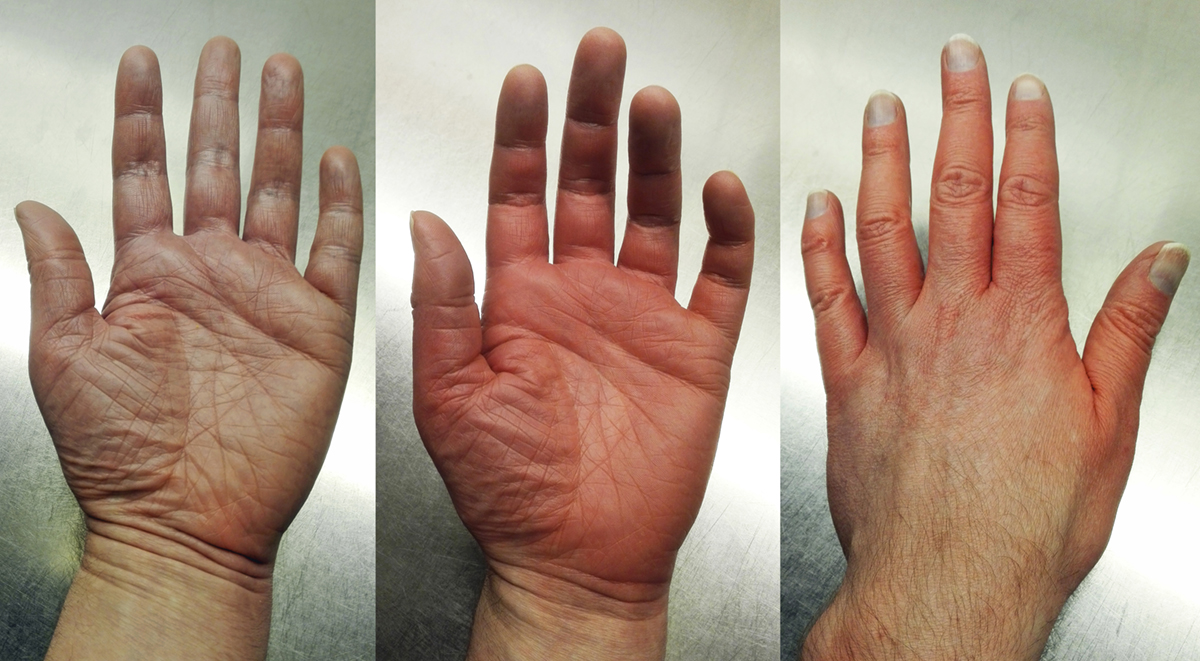Table of Content
In this treatment, your therapist will touch or apply gentle pressure to an area of your skin. After several sessions, your therapist will gradually increase the pressure until it’s no longer painful. People who are suffering from allodynia pain are extremely sensitive to touch.
Similarly, an MRI of the brain may help diagnose MS if the clinical picture suggests high suspicion. CBC and BMP are often helpful, with the addition of ESR and CRP if a concurrent rheumatologic condition is suspected. B12, thiamine, and TSH can also help diagnose other causes of neuropathy.
Treatment: How to Treat Allodynic Pain
30.Smart KM, Wand BM, O'Connell NE. Physiotherapy for pain and disability in adults with complex regional pain syndrome types I and II. Many patients erroneously believe opioids are effective for chronic neuropathic pain. These potentials work similarly to somatosensory evoked potentials. Instead of a sensory stimulus, laser-generated heat pulses and contact-heat evoked potentials use lasers and heated instruments, testing thermal pain perception, thereby measuring delta fibers.
Explain the role of interprofessional teams in providing patient education about allodynia in order to achieve better clinical outcomes. Summarize the difference between allodynia and hyperalgesia. Anyone experiencing unexplained or unexpected pain should seek medical advice. Allodynia can limit a person’s activities and affect their quality of life. According to the American Migraine Foundation, allodynia can feel like having sunburn all over the body. Also, tests may be performed to rule out any other conditions.
Prevention[edit | edit source]
Physiopedia articles are best used to find the original sources of information . The pain, which ranges from mild to severe, is different for each person. 10.Lipton RB, Bigal ME, Ashina S, Burstein R, Silberstein S, Reed ML, Serrano D, Stewart WF., American Migraine Prevalence Prevention Advisory Group. Punch skin biopsies can quantitatively measure small neurons. After the biopsy, samples are stained to detect intraepidermal nerve fiber density, comparing the measured density to a standard.
Allodynia may happen when nerves carry pain messages incorrectly, possibly due to a crossover of nerve fibers. There may be increased responsiveness or a malfunction in a type of nerve ending known as nociceptors. Experts do not know precisely why allodynia happens, but it is most likely a symptom of a nerve condition. One theory is that certain nerve fibers are crossed, leading to unusual reactions. Some people feel extreme pain from something minor, such as a paper cut.
Related to Migraine & Headaches
Lombafit cannot be held responsible for any harm it may cause, directly or indirectly, as a result of the use of the content offered. Several modalities can be used to relieve symptoms, although there is currently no treatment that can resolve allodynia. For example, you can start by touching hypersensitive skin with a texture as soft as silk.
Cell-specific role of HDAC6 in chemotherapy-induced mechanical allodynia and loss of intraepidermal nerve fibers. Superiority of capsaicin 8% patch versus oral pregabalin on dynamic mechanical allodynia in patients with peripheral neuropathic pain. Your doctor will go over any underlying conditions, such as diabetes, and ask you about symptoms. It’s important to make an appointment with a doctor to confirm this. A small 2021 study involving 30 people with post-traumatic headaches suggested 79 percent of participants experienced hypersensitivity. Of those people, 54 percent were affected by tactile and light hypersensitivity.
These medications come in creams or lotions that you have to apply to your skin. For your allodynia treatment, you can also wear a patch on your skin that delivers medication throughout the day. “Any time someone has pain that outlasts its usefulness or expected post-injury trajectory, a person should see their doctor,” she says. Allodynia is an uncommon symptom that can result from several nerve-related conditions. The information offered on this site does not in any way replace treatment by a health professional.
Allodynia can also occur if the nerve carries pain messages incorrectly due to the crossing over of the nerve fibers. It can lead to increased responsiveness or malfunction in nociceptors, a type of nerve ending. If you have a family history of fibromyalgia, MS, stroke, or diabetes, you should talk to your healthcare expert. You should also go for regular checkups so your doctor can monitor your health.
To ease allodynia, your doctor will try to treat the underlying cause. The American Headache Society founded the American Migraine Foundation to provide access to information and resources for individuals living with migraine, as well as their loved ones. AMF is a non-profit organization dedicated to the advancement of research and awareness surrounding migraine.

There does not appear to be a sex-specific difference in the development of diabetic neuropathic pain. The strongest existing evidence suggests that sensory neuronal fibers may stimulate pain pathways, possibly due to an error in long-term potentiation. However, studies exist that suggest that superficial sensory components may also have involvement, as well as evidence that different mental states can affect the perception of allodynia. If we use the analogy of crisscrossed fibers, the actual location of the crisscrossing can vary and may be located almost anywhere along the peripheral to the central nervous system tract. Allodynia can be due to an underlying disease such as diabetes-induced neuropathic tactile allodynia or can be the primary disease process itself, such as in postherpetic neuralgia.
Allodynia is the medical term for skin sensitive to touch but nothing there. The slightest touch to a person with extra sensitive skin causes pain. Just so you’re aware, allodynia is not a condition but rather it’s a sign there are other issues to address. There are many possible reasons why your skin hurts to touch or rub. Keep reading to know what a few of those possibilities are.


No comments:
Post a Comment